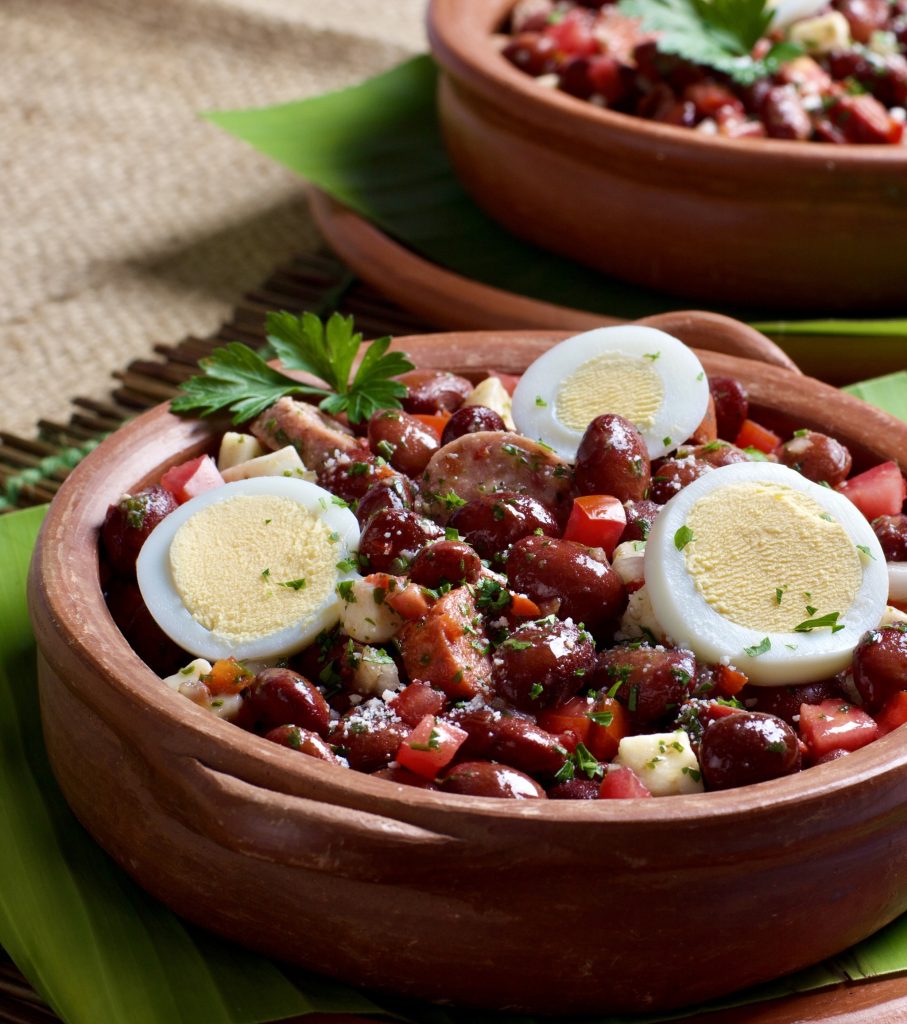This post is also available in: Español
This easy Guatemalan tripe stew recipe is a traditional Guatemalan dish that is still very popular in homes both in Guatemala City and in smaller towns. Known as “tiras de panza” in Guatemala this tripe recipe blends the unique taste and texture of tripe with a thick sauce made with tomatoes, tomatillos, chiles and spices to create a thick and comforting stew.
This easy Guatemalan recipe is also quite unique if you’re not used to eating tripe. If you are already a fan of tripe you’re sure to fall in love with this popular Guatemalan food.
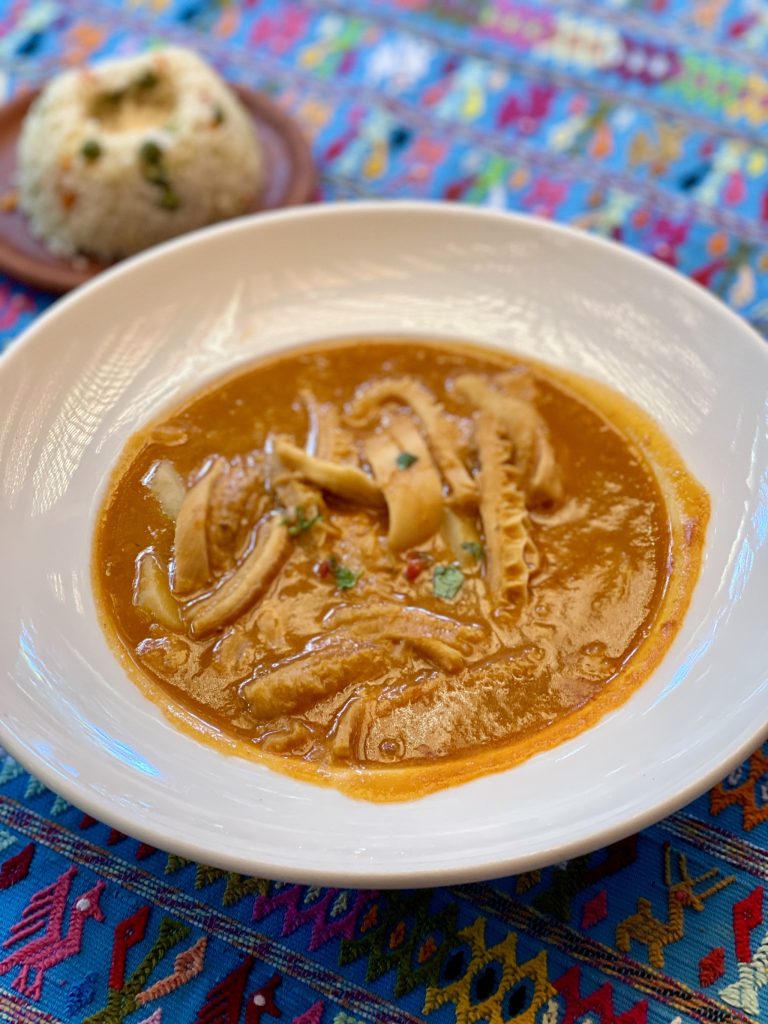
Although this recipe is made in homes throughout Guatemala it is not very common to find it in restaurants. If you are Guatemalan food and want to try it you an find tiras de panza in Restaurante El Adobe in Guatemala City and in La Cuevita de los Urquizú in Antigua Guatemala.
Among the many traditional Guatemalan dishes, tripe stew, known locally as “tiras de panza” is an easy Guatemalan recipe that is a favorite during the cooler months as as comforting as it is delicious. In this article I will not only share the recipe for Guatemalan tiras de panza but I will also share the steps for cleaning and preparing tripe. Don’t worry the process for preparing tripe is easy.
What is Tripe?
Tripe refers to the edible lining from the stomachs of various farm animals, but most commonly cows. There are different types of tripe depending on which part of the stomach it comes from, including the smooth, or blanket tripe, honeycomb tripe known for its distinctive texture, and book tripe.
Each type offers a unique texture and flavor profile, making tripe a versatile ingredient in cooking. In Guatemalan honeycomb tripe is preferred for making this easy tripe recipe.

The Origin and History of Tripe in Latin America
Tripe has a long history in Latin American cuisine, tracing back to the times when indigenous and Spanish culinary traditions first merged. This fusion created a diverse blend of flavors and dishes unique to the region, with tripe stew emerging as a comfort food across many countries, including Guatemala. In each place, the recipe for tripe stew is a bit different, incorporating local ingredients and cooking methods. In many countries tripe soup or stew is known as sopa de mondongo. In Guatemala the panza en tiras or tripe stew is a simple yet delicious recipe that you’re sure to fall in love.
The Health Benefits of Tripe
Despite its humble origins, tripe is packed with nutrients essential for good health. It’s a great source of protein, which is vital for building and repairing tissues, and it also provides a good dose of minerals like zinc, selenium, and phosphorus, which play crucial roles in maintaining a healthy immune system, bones, and metabolism. Additionally, tripe is rich in vitamins such as B12, essential for brain health and creating red blood cells. The health benefits of tripe, combined with its rich flavors, make it not only a culinary delight but also a nutritious addition to any diet.
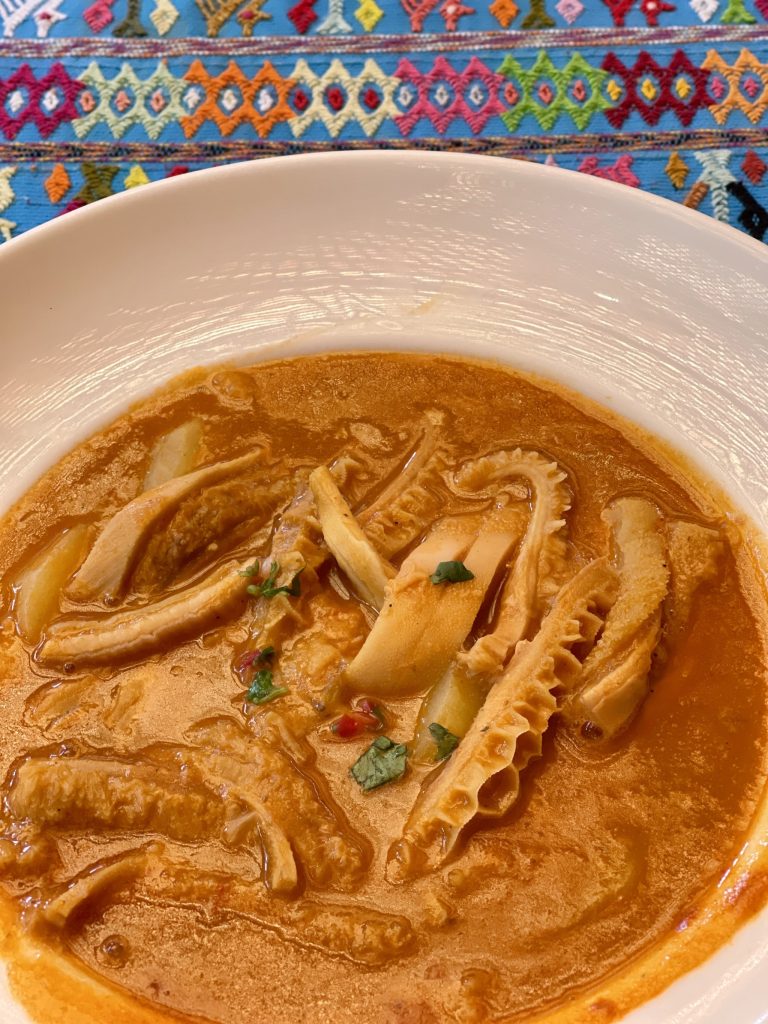
What are the ingredients for Guatemalan Tripe Stew Recipe (Tiras de Panza)
The key ingredients for this recipe include tomatoes, tomatillos, red bell peppers, guaque chiles, onion, and garlic, which are used for creating a rich and flavorful sauce. The tripe is cleaned, cut into strips, and then cooked then combined with the tomato-based sauce or recado, to make a hearty dish that’s full of traditional flavors.
Panza en Amarillo Recipe
A slightly different version of this Guatemalan tripe stew, known as panza en amarillo (tripe in yellow) incorporates a chayote into the tomato based sauce or recado.
How To Clean Tripe
Cleaning tripe is an important step before cooking it to ensure it’s clean and pleasant to eat. Tripe, being the lining of an animal’s stomach, naturally contains impurities and an odor that many find unappealing. The cleaning process helps remove these impurities, as well as the smell, and softens the tripe, making it ready for cooking.

Steps to Clean Honeycomb Tripe:
- Rinse Under Cold Water: Start by rinsing the tripe under cold running water to wash away any loose particles. This initial rinse helps to remove surface debris and prepares the tripe for a deeper clean.
- Soak in Vinegar and Lime Water: Prepare a soaking solution by filling a large bowl with cold water. Add 1 cup of white vinegar and the juice of 1 lime. The acidity from the vinegar and lime works together to break down impurities and soften the tripe. Place the tripe in the solution, ensuring it’s fully submerged, and let it soak for 2 to 3 hours. This step is crucial for neutralizing odors and beginning the tenderization process.
- Scrub the Tripe: After soaking, take the tripe out of the solution and use a clean brush to scrub both sides thoroughly. This physical scrubbing helps to remove any remaining impurities and further reduces any lingering odors.
- Rinse Again: Rinse the tripe under cold running water once more after scrubbing. This final rinse washes away any loosened particles and residue from the vinegar and lime solution.
- Boil the Tripe: Place the cleaned tripe in a pot and cover it with fresh water. You can add a few more slices of lime or a splash of vinegar to the water if desired. Bring it to a boil, then reduce the heat and simmer for 1 to 2 hours, or until the tripe becomes tender. This boiling process completes the cleaning and ensures the tripe is soft enough for your recipes.
- Final Rinse and Cut: Once the tripe is tender, remove it from the pot and give it one last rinse under cold water. Now, it’s ready to be cut into strips.
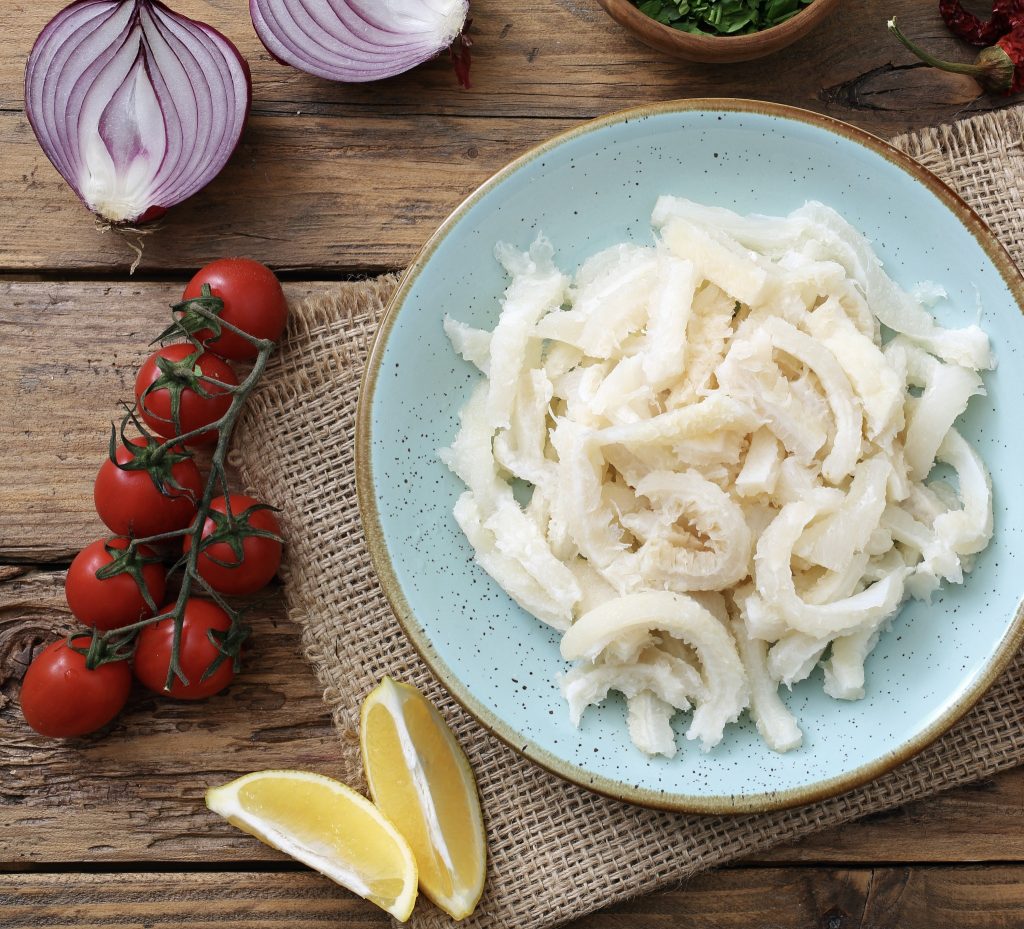
How to Store Tripe Stew
Storing tripe stew properly ensures you can enjoy its flavors even later. After cooking, let the stew cool to room temperature before placing it in the refrigerator. For refrigeration, transfer the stew into airtight containers; it can stay fresh for up to three to five days.
Can You Freeze Tripe Stew?
Yes, you can freeze tripe stew as long as you follow some simple steps. If you’d like to freeze it, divide the stew into portion-sized containers or freezer bags, removing as much air as possible to prevent freezer burn. Label each container with the date, and you can freeze the stew for up to three months.
Thawing and Reheating
When ready to eat, thaw it overnight in the refrigerator or use the microwave for a quick thaw. Reheat on the stove over medium heat, adding a little broth or water if it seems too thick until it’s heated through. This way, you can ensure the stew maintains its taste and texture after storing.

Guatemalan Tripe Stew Recipe (Panza en Tiras)
Ingredients
- FOR THE TRIPE
- 2 pounds of tripe
- 1 cup of distilled vinegar
- Juice of 1 lime
- FOR THE SAUCE
- 15 large tomatoes
- 3 tomatillos
- 2 red bell peppers
- 3 guaque chiles
- 1 large onion
- 2 garlic cloves
- Salt to taste
- ¼ cup of olive oil
Instructions
For the Tripe
- Rinse the tripe under cold running water to remove surface debris.
- Fill a large bowl with cold water. Add 1 cup of white vinegar and the juice of 1 lime. Place the tripe in the solution, ensuring it's fully submerged, and let it soak for 2 to 3 hours.
- After soaking, take the tripe out of the solution and use a clean brush to scrub both sides thoroughly to remove any remaining impurities.
- Rinse the tripe under cold running water once more.
Place the cleaned tripe in a pot and cover it with fresh water. You can add a few more slices of lime or a splash of vinegar to the water if desired. - Bring it to a boil, then reduce the heat and simmer for 1 to 2 hours, or until the tripe becomes tender.
- Once the tripe is tender, remove it from the pot and give it one last rinse under cold water. Now, it's ready to be cut into strips.
For the sauce:
- Wash the tomatoes, onion, miltomate, garlic, and chiles (removing the seeds).
- Boil the ingredients with enough water, adding a little bit of salt.
- Once the ingredients are cooked, blend them with some of the water used for boiling.
- In a skillet, add 1/4 cup of olive oil.
- Turn the heat to low. After it heats up, add the previously prepared sauce and season with salt to taste.
- When the sauce is thick and consistent, add the tripe strips and let it boil for about 10 minutes.
- Season again to taste, if desired.
- Serve the tripe strips in a deep dish.
- You can accompany it with tortillas, rice, or some salad, if you wish.
Nutrition Information:
Yield: 6 Serving Size: 1Amount Per Serving: Calories: 372Total Fat: 17gSaturated Fat: 4gTrans Fat: 0gUnsaturated Fat: 11gCholesterol: 260mgSodium: 333mgCarbohydrates: 31gFiber: 7gSugar: 18gProtein: 25g
Other Guatemalan Recipes
Pepián De Pollo
Pepián de pollo, or chicken pepián, is one of the oldest Guatemalan recipes. This chicken stew is rich in flavors and roasted spices. You can make it with chicken, beef, or pork (or a combination of all). You stew the meat in a tomato-based sauce with roasted seeds and peppers. Adding potatoes and carrots, with white rice as a side dish, makes this recipe a complete meal.

Lengua En Salsa Roja Recipe From Guatemala (Beef Tounge Recipe)
Lengua en Salsa Roja is a classic dish from Guatemala. It’s made by cooking beef tongue slowly in a thick tomato sauce, which highlights the rich food culture of Guatemala. This recipe for beef tongue brings together the tender meat and the bold taste of the tomato sauce, making it a popular choice in many Guatemalan households.
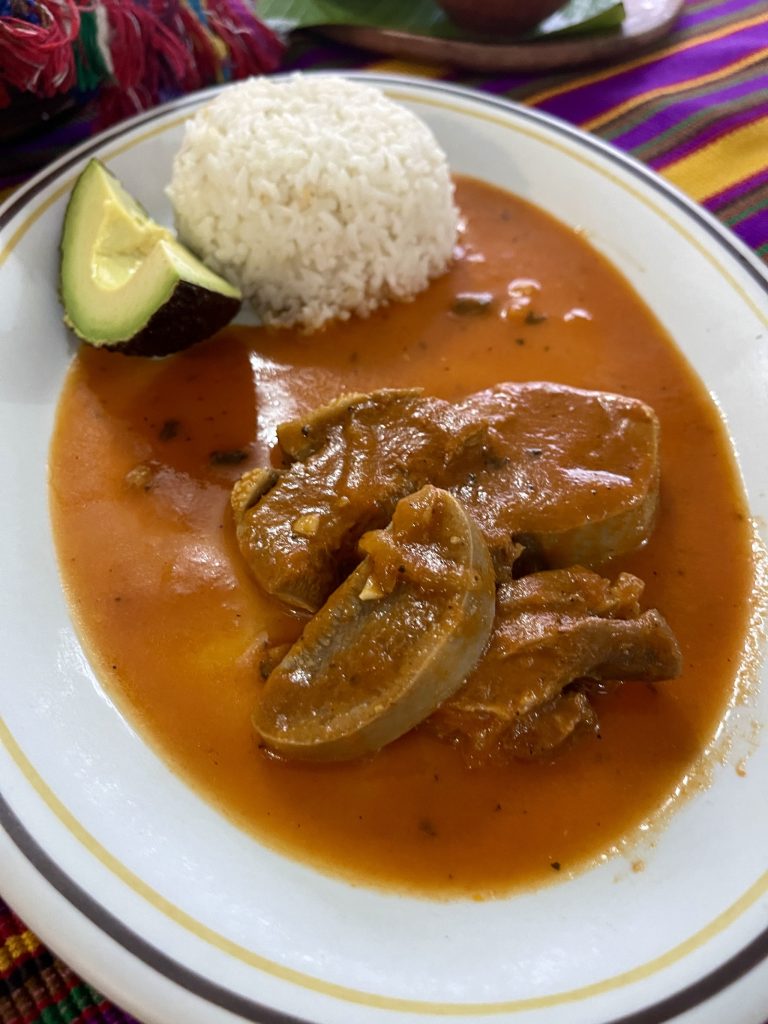
Guatemalan Revolcado Recipe
This easy Guatemalan revolcado recipe lets you recreate this traditional Guatemalan pig’s head stew at home. Made with tender and flavorful parts of the pig’s head, aromatic spices, tomatoes, and a variety of traditional ingredients, revolcado is one of the most popular traditional Guatemalan foods. Don’t be intimidated by its name, this easy-to-follow recipe will guide you through each step, allowing you to recreate this authentic Guatemalan dish in your own kitchen.
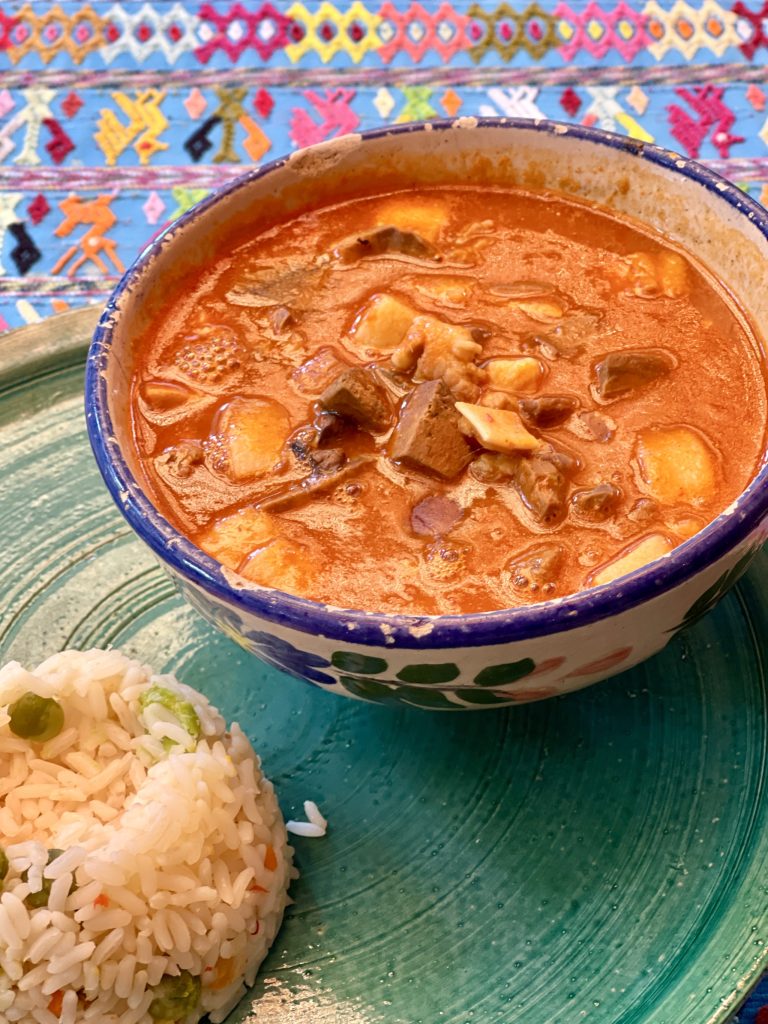
Frijoles Blancos Con Espinazo Recipe From Guatemala (White Beans With Pork)
This straightforward recipe for Frijoles Blancos con Espinazo from Guatemala is loved in many households. It’s an uncomplicated meal that blends white beans with pork spine, offering a filling experience with deep flavors. It’s among the well-liked recipes in Guatemala, often served at family meals and a significant aspect of the country’s culinary tradition.
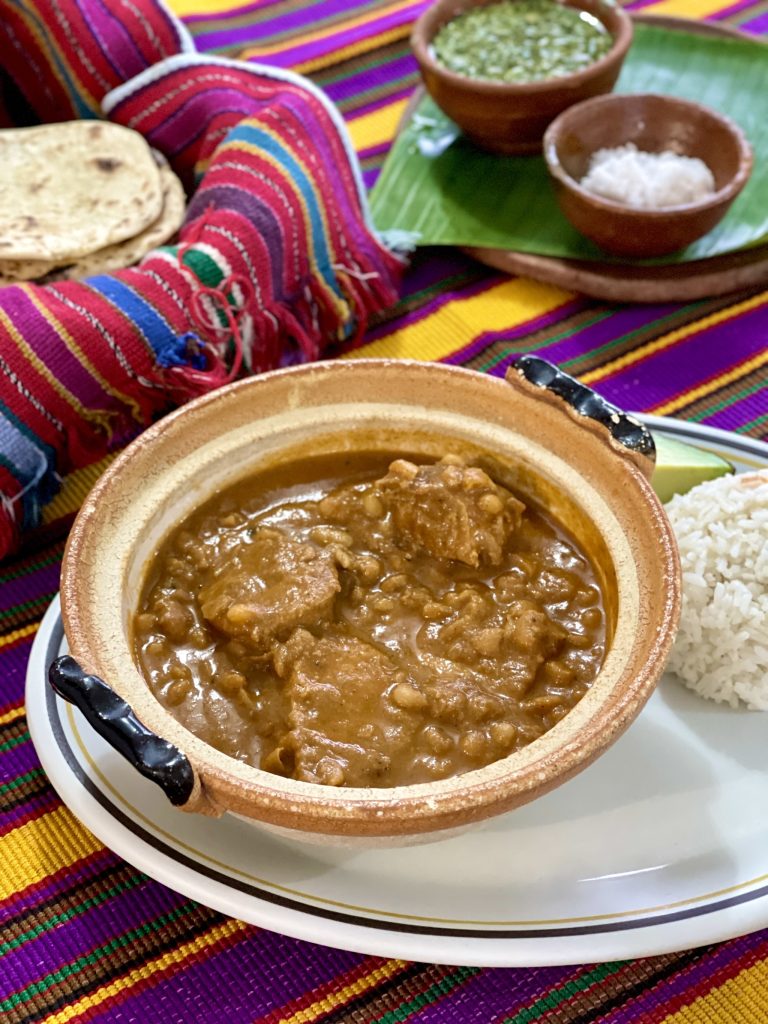
Piloyada Antigueña: A Guatemalan Pork And Bean Recipe
The Piloyada Antigueña is a classic dish from Antigua Guatemala that combines simple ingredients for a flavorful meal. It features piloy beans, which are similar to kidney or pinto beans, along with fresh ingredients like chorizo, pork, and vegetables, all topped with a homemade dressing. This dish is one of my top choices for a nutritious and tasty bean recipe from Guatemala. Piloy beans are the main attraction, making the meal hearty and fulfilling.
